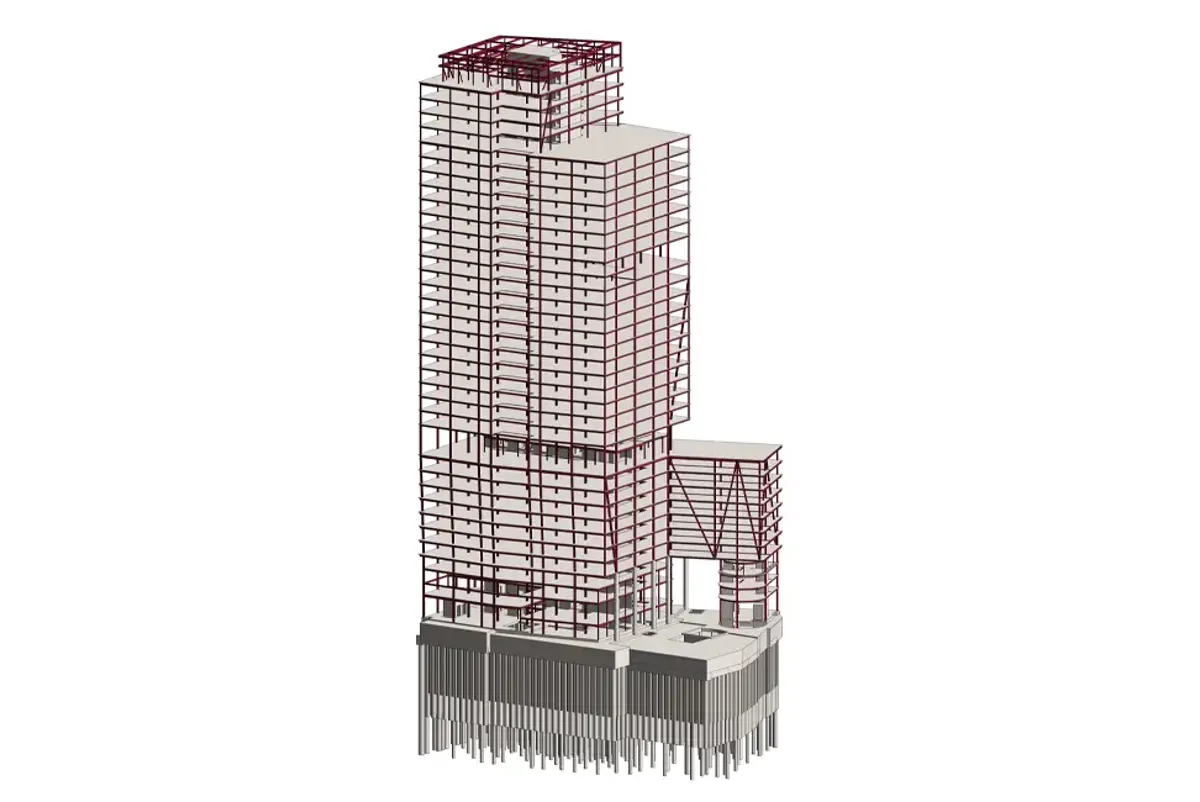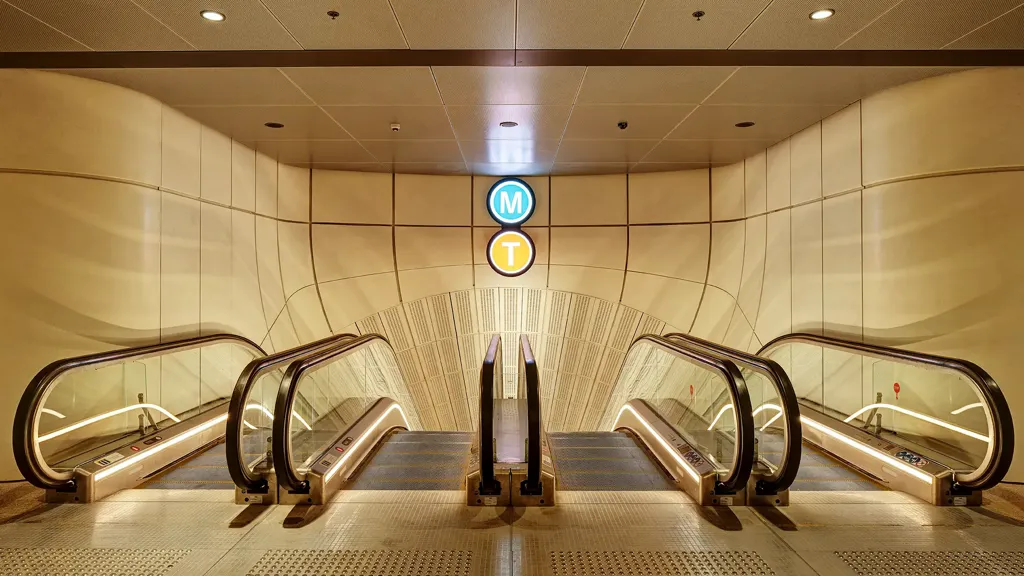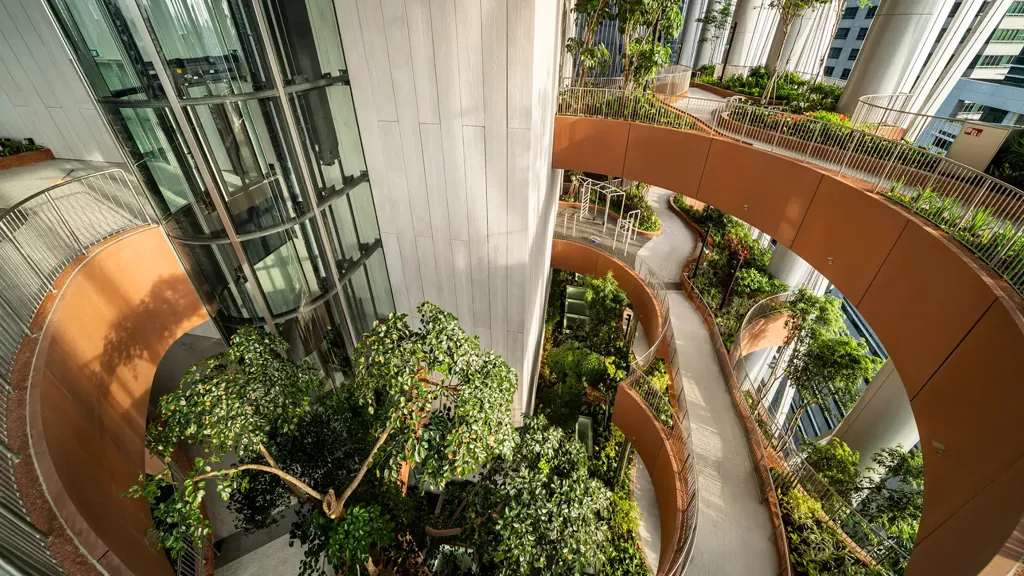Challenging convention to create the next generation of tall buildings
50 Fenchurch Street

What we delivered
-
Compared to typical tall London offices, our design has saved approximately 200 kgC02e/m2, the equivalent of approximately 18,000 economy flights from London to New York
-
Our design integrates wellness and technology, setting the building on track to achieve WELL Core, SmartScore and WiredScore "Platinum" certifications
Get in touch with our team
Designed to be net zero in operation, 50 Fenchurch Street will be one of the first all-electric towers and one of the lowest carbon tall buildings in London – both in terms of upfront carbon and operational energy use. The building challenges conventional high-rise building practices and is set to become a worldwide example of sustainability.
Appointed by AXA IM Alts and YardNine to provide multidisciplinary engineering services, Arup is designing the new 36-storey building, including the new basement home for the Clothworkers Company. Covering just under one million square feet, half of the basement will be constructed beneath a retained Grade-I listed medieval church tower. In addition to flexible office spaces, 50 Fenchurch Street will feature a public winter garden and a connected 10th floor public terrace.
Our innovative approach to building design and the use of lower carbon materials were critical to achieving the building’s sustainability ambitions. When compared with similar tall buildings, our design has saved approximately 200kgC02e/m2 of structural carbon. In addition, the use of underfloor air, the removal of ceilings, and a façade that responds in real time to varying sunlight conditions will further reduce upfront and operational carbon.
Creating a low carbon and adaptable structure to meet future needs
As the structure of a building typically contributes to half of its total upfront carbon, designing a low-carbon skeleton for 50 Fenchurch Street was crucial. Applying an innovative approach to the building grid, which deviates from the conventional longer-span carbon-intensive floors, was key to achieving carbon savings. We complemented this with other elements such as a piled raft foundation solution, which saves concrete and carbon by keeping foundations to a shallow depth within the clay layer. Our solution deviates from the much deeper foundations that are typically used in tall buildings across the City of London.
Once the design has been optimised, the materials used in the structure can also make a further significant difference to its embodied carbon. For this reason, we have designed lower carbon concrete mixes in conjunction with the time constraints of the contractor’s programme. Greener steel supply is used where appropriate, without relying on sources that are not scalable globally. Compared with other tall buildings in the capital, our structure reduces carbon from around 460kgC02e/m2 to around 260 kgC02e/m2. This innovation saves more than five times the amount of carbon than a low-energy building will consume in 50 years of operation.
Allowing flexibility for different uses, the building has been designed to adapt to change without major structural alterations. For example, the raft foundation can accommodate future redistribution of building weight and the steel plus precast frame can be partially dismantled or extended in the future. Building services can also be modified without causing disruption to other parts of the building.
The floor structure is built from precast concrete planks, manufactured off-site, which are supported on steel beams spaced widely at 4.5 m apart. The use of planks and a wider spacing of beam – compared to traditional framing – allows occupiers more flexibility to design floor openings in their tenancies. These openings can encourage active travel and community building, without affecting the structural integrity of the overall building.

The structural frame is supported on shallower foundations than the ones common in other buildings in London
Creating the next generation of sustainable office spaces
Our design removed the gas supply and converted 50 Fenchurch Street into an all-electric building with no fossil fuels consumed on site. The building will feature high efficiency and low embodied carbon systems to enable a 25% reduction in operational energy and a 15% decrease in the embodied carbon associated with building services. Key interventions include reversible heat pumps that provide both heating and cooling from the same equipment, automated blinds that maximise daylight but reduce solar gain, and an 'ambient loop' that collects waste heat from electrical equipment to generate hot water for showers.
To reduce both operational energy consumption and embodied carbon, we took a passive but high-performance approach to cooling. The enhanced underfloor air system designed by Arup is the only cooling system needed for internal areas avoiding the need for ductwork, pipes or other cooling equipment at ceiling level. By distributing outside air directly, this system avoids consumption of energy for sub-cooling for more than 80% of the year. The system adopts the principles of displacement ventilation with lower air velocity and noise contributing to increased occupant well-being.
Set to achieve various sustainability accreditations including NABERS 5.5*, BREEAM Outstanding and EPC A, 50 Fenchurch Street has been designed to have a minimal environmental impact and reduced energy consumption. In addition, it also meets the criteria set in the Climate Emergency Design Guide. Developed by London Energy Transformation Initiative (LETI), this document outlines how new buildings should be designed to ensure our climate change targets are met.
An underfloor air system also unlocks new ways of servicing and operating the building in line with a lower carbon future. For example, it increases adaptability and flexibility, accommodating different levels of occupancy with less wastage of material when relocating occupiers. With ventilation rates more than 30% higher than the latest British Council for Office (BCO) design guidance, occupants will benefit from cleaner, fresher and healthier air. The internal spaces will enjoy low carbon dioxide levels, reduced contaminants and higher concentrations of oxygen.
The building has also been designed to minimise water demand through rainwater and greywater recycling systems. For instance, up to 40% of the annual rainfall on the site will be recycled for use inside the building while recycled shower waste will meet 14% of its daily WC flushing demand. Additional features such as low flow fittings and leak detection systems will also contribute to increased water resilience.
Integrating wellness and smart technology to create a healthy working space
50 Fenchurch Street is also targeting WELL Core Platinum, which recognises the investment in systems that create healthy work environments. From air to lighting, our design embeds multiple elements such as restorative spaces for mental health and nutrition facilities for healthy eating to support users’ wellbeing, engagement, happiness and ultimately, productivity.
Proving the building meets exceptional digital connectivity and smart technology standards, the building is targeting SmartScore and WiredScore "Platinum" certifications. The first assesses user functionality and technology implemented to improve their experience like air quality sensors. The second focuses on the resilience and preparedness of digital connectivity to support their demands such as internet speed.
Adamsons Architects International / Core 5 / DSDHA / Eric Parry Architects/ Gensler / Third London Wall / YardNine
Projects
Explore more commercial property projects

Designing Sydney’s first integrated station development
Sydney Metro Martin Place integrated station development, Australia

CapitaSpring uses biophilic design to keep people cool and healthy
CapitaSpring, Singapore

Connecting work, nature and Country
Arup Workplace, WS2, Australia

The largest column-free subterranean ballroom and the largest rooftop recreational park in Malaysia
Subterranean Penang International Convention & Exhibition Centre (SPICE), Malaysia
Get in touch with us
If you'd like to speak to one of our property experts about any of the issues raised on this page or a potential collaboration then please get in touch by completing the form.

